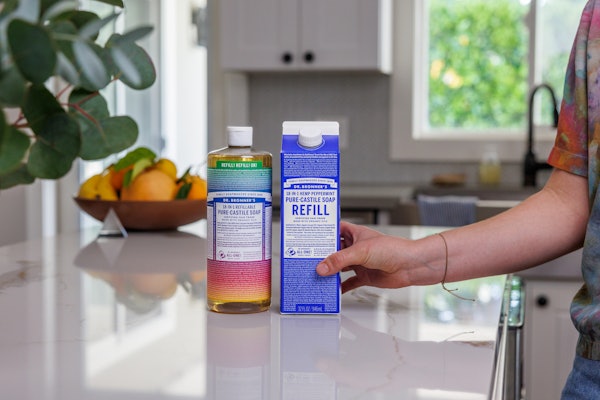In addressing this need, the company has created a separate business
unit focused solely on manufacture and sale of WPP materials. WPP bag
manufacturing is currently in progress at several of Exopack's
manufacturing facilities and will include both WPP and paper-laminated
WPP packaging materials. And to further expand production capability,
capital for new equipment is also being committed. Exopack will
continue to approach the market as one offering multiwall paper and
plastic finished bags and FFS packaging from a single source.
The History of the Woven Polypropylene Shipping Sack
The North American shipping sack market is experiencing a large
impact by bags constructed from WPP. Historically seen in IBC bulk
sacks, WPP is making inroads into retail and smaller format shipping
sacks due to greatly enhanced graphics. The key performance
characteristic of a WPP bag is outstanding strength when compared to
other materials. In addition to having very high puncture resistance,
it also has excellent tear resistance as a hole will not turn into a
large slit or lead to total bag failure.
WPP is formed by weaving polypropylene strands or threads into a
cross-mesh fabric pattern. The fabric is then coated or laminated to
create a smooth surface for both printing and binding the fibers
together. For consumer applications, the WPP fabric is usually
laminated to an Oriented Polypropylene (OPP) film that is reverse
printed. Various types of bags can then be converted with sewn-open
mouth and valve styles being the most popular. Globally, WPP is the
primary package option and has the leading market share for dry goods
in Asia, South America, and Africa. Although generally seen with
rudimentary surface printing and manufactured by hand, superior
strength makes it the bag of choice. WPP bags have been in the US for
years but were used in commodity grade dry goods applications where
graphics and presentation played a negligible role. But now that it is
gaining acceptance due to performance and improved appearance, many
companies using WPP Sewn and Valve packaging have found that it can be
utilized on existing equipment with little modification. A recent
product addition has been a bag constructed of paper laminated to WPP
which provides the appearance and stackability of paper, but with the
added strength benefit of the WPP substrate.
What is driving WPP?
The current proliferation of WPP bags can be traced to two key drivers.
First, the addition of a reverse-printed BOPP outer layer
laminated to the WPP material. This enables a WPP bag to have the same
high-quality graphic appearance and shelf-appeal as multiwall and other
plastic packaging with high gloss, a smooth surface, and resistance to
ink abrasion.
Second, retailers have identified a significant potential cost
savings by cutting down on bag loss and improving cleanliness resulting
from excessive and preventable breakage. Hard-cost savings include a
reduction of broken bags that are either unsaleable or sold at a deep
discount, reduced waste, and reduction of customer returns. Soft cost
savings include a significant labor reduction in the need to clean and
restack displays and aisles, lower insurance, and a reduction in
overhead costs associated with customer and supplier returns.
Fill-product manufacturers have enjoyed similar cost savings as well as
a reduction in damage pay-back to their retailers and in the need to
rebag product due to damage.
Market applications that are currently evaluating and utilizing
WPP bags include pet foods, animal feed, cat litter, building materials
such as concrete and grout, sand, fertilizer, resins and chemicals.
These items are often subject to harsh conditions throughout their
lifecycle and may be handled multiple times before use. It is not
uncommon for a retail item to travel in 3 to 4 separate vehicles, be
restacked, slid or dropped into a vehicle and left unprotected by the
end-user for days at a time. Additionally, export bags may be handled
8-10 times and travel in an open small truck or even a bicycle.
Automated pallet handling may be unavailable so the bag may be moved
and stacked multiple times manually.
Source of Supply
The largest issue to date facing users of WPP bags has been a
lack of reliability in the source of supply. Distribution channels have
been dominated by importers and resellers who have been unable to
duplicate the service that has been available from domestic bag and
packaging manufacturers, lead times from Asia average 10 to 12 weeks so
demand needs to be forecasted with a high degree of accuracy, there is
difficulty in obtaining small run orders, and quality and consistency
from bag to bag and run-to-run have presented major issues. Also adding
to the problems have been importers who switch suppliers without
informing customers and a distribution channel that does not always
stand behind or support it's products. Technical support and assumption
of responsibility for problems have been in short supply. There have
been several noted examples of offshore manufacturers copying
confidential information and products, as well as copying incorrect
information. Service has been inconsistent and often riddled with a
series of hidden costs associated with importing, such as product
delivered to only a single location leaving the user to perform his own
quality inspection, sorting, inventorying and distribution of bags to
their own packing locations.
But these issues are now being addressed as more domestic bag
manufacturers such as Exopack and other high-end suppliers are now
entering the market. These groups will bring the same level of service,
quality and support that has characterized the multiwall bag and
packaging markets for years. Several manufacturers are installing
equipment for making WPP bags in the US. They are also applying their
knowledge and experience to create a WPP supply-chain that will provide
the same level of 2-4 week service that packaging users require.
Production processes will be automated; end-users can expect bags
made to the same world class standard of quality that they have become
accustomed, including manufacturing environments that meet FDA and AIB
standards.
Long-term, WPP users should expect manufacturers to offer a
dual sourcing strategy. Major WPP bag suppliers will be manufacturing
in the US and Canada to guarantee service and availability. But these
same domestic manufacturers will also invest and partner with offshore
manufacturers. This will enable them to control costs, but more
importantly will assure that customers get the quality and service they
require.
It is important to keep in mind that WPP is still in the early
stages of use in North American markets. While the product performance
and appearance are good, an effective supply-chain program designed to
meet the user's needs is still in development. Improvements in quality
and service are still to be expected as well as new products such as
heat-seal or other sealable type WPP bags are on the horizon. Today,
the key to utilizing a WPP package is as much finding the right
supplier as it is finding a good product. Partnering with a source that
will support needs through quality and service is critical.






















